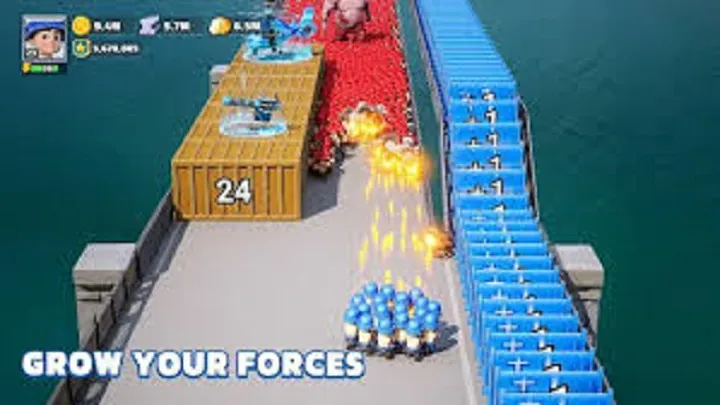Introduction
Last War: Survival is more than a post-apocalyptic survival game. It throws players into a devastated world where every bullet, drop of water, and scrap of food can decide life or death. While the game is filled with battles, alliances, and evolving threats, one issue defines the experience at its core: resource scarcity. Unlike many survival titles where resources eventually become abundant, Last War: Survival never allows players to fully relax. The tension of managing scarcity shapes not only strategies but also the psychological weight of the game. This article dives deeply into the issue of resource scarcity, following its evolution from the first desperate hours to the endgame crises that test even the most seasoned survivors.
First Contact With Scarcity – The Shock of Limited Supplies
When players first begin, the scarcity of resources hits immediately. The tutorial may teach basic mechanics, but it also emphasizes that everything is finite. Ammunition is sparse, food spoils, and medical supplies vanish faster than expected.

This shock creates urgency. New players quickly learn that hoarding is not just smart—it is essential. The first hours of gameplay set the tone: this is not about luxury, but about survival with nothing guaranteed.
Establishing a Survival Routine
After the initial panic, players settle into a survival routine. Scarcity forces them to prioritize tasks. Should they scavenge for food, reinforce shelter, or risk a supply run for ammo? Choices become sacrifices.
Daily Survival Checklist
- Secure minimal food and water.
- Check medical supplies and condition.
- Plan short scavenging trips.
- Conserve ammunition by avoiding unnecessary combat.
The early routine reveals how scarcity dictates every action. There is no room for waste.
Mid-Game Expansion – Scarcity Becomes Strategic
As the game advances, players begin to expand beyond their immediate shelter. This is when scarcity shifts from being a daily burden to a larger strategic challenge. Expanding territory requires resources, but expansion itself drains what little remains.
Here, scarcity becomes a puzzle: do you risk stretching supplies thin to secure more, or play conservatively and risk being overtaken by stronger factions? The mid-game highlights the double-edged nature of resource management.
The Economics of Scarcity – Trading and Barter Systems
Last War: Survival features a robust barter system that turns scarcity into an economy. Players must decide what to trade and what to keep. Food might be worth more than ammunition one day, but worthless the next.
Common Trade Dilemmas
- Trading ammo for food: survival vs defense.
- Exchanging medicine for shelter upgrades: immediate needs vs long-term safety.
- Risking rare resources for temporary alliances.
Scarcity ensures that no trade feels comfortable. Every transaction carries potential regret.
Factional Pressures – Scarcity as Leverage
Scarcity is not only a personal struggle—it becomes a weapon wielded by factions. Stronger groups often hoard supplies and use them as leverage to control weaker survivors.
Players must navigate these dynamics carefully. Aligning with one faction may guarantee food but at the cost of autonomy. Refusing alliances may leave players starving. Scarcity drives political tension, making every factional choice a test of loyalty versus survival.
Crisis Points – When Scarcity Peaks
Certain events in the game push scarcity to its extreme. Epidemics, supply collapses, or rival raids can erase stockpiles overnight. These crisis points are designed to force players into impossible decisions.
For example, do you use your last antibiotics to save a key ally, or keep them in case your character gets sick? These moments highlight the emotional power of scarcity: it is not just numbers on a screen, but moral weight in every choice.
Endgame Scarcity – The Illusion of Plenty
As players near the endgame, they may feel they have conquered scarcity. Stockpiles grow, bases strengthen, and alliances stabilize. Yet Last War: Survival cleverly reintroduces scarcity at the worst moment.
Large-scale conflicts, environmental collapses, and narrative twists strip resources away, reminding players that no amount of preparation can erase scarcity entirely. It is the game’s way of reinforcing its core theme: survival is always temporary, never guaranteed.
Psychological Impact of Scarcity
Scarcity in Last War: Survival is not just a mechanic—it shapes the player’s mindset. Many players report feeling anxiety over low supplies, guilt over sacrificing allies, or relief when a successful scavenging run pays off.

This emotional rollercoaster mirrors real-world survival psychology. By constantly reminding players of what they lack, the game keeps them engaged, immersed, and often distressed in the best possible way.
Community Strategies for Managing Scarcity
The Last War community has generated countless guides and discussions on scarcity management. Players debate whether to adopt a minimalist approach, focus on combat dominance, or prioritize alliances.
Popular Strategies
- Minimalist Survival: Conserve at all costs, avoid waste.
- Aggressive Expansion: Take resources from others before they take yours.
- Diplomatic Survival: Use alliances and trades to offset shortages.
Each strategy reflects a different philosophy of handling scarcity, and none are guaranteed to succeed.
Scarcity as the Core of Replayability
Ultimately, the brilliance of Last War: Survival lies in how scarcity drives replayability. Every new game presents different shortages, faction dynamics, and crises. Players cannot rely on one strategy forever—they must adapt.
Scarcity ensures that the game never feels easy or repetitive. It keeps tension alive, forcing players to reconsider every choice, every alliance, and every bullet spent.
Conclusion
Resource scarcity in Last War: Survival is not a side mechanic—it is the heartbeat of the game. From the shock of the first empty pantry to the crushing crises of the endgame, scarcity dictates every action, every alliance, and every decision. By weaving scarcity into both mechanics and narrative, the game delivers a survival experience that feels authentic, tense, and endlessly replayable. It is not about thriving—it is about scraping by in a world that never gives enough.

















